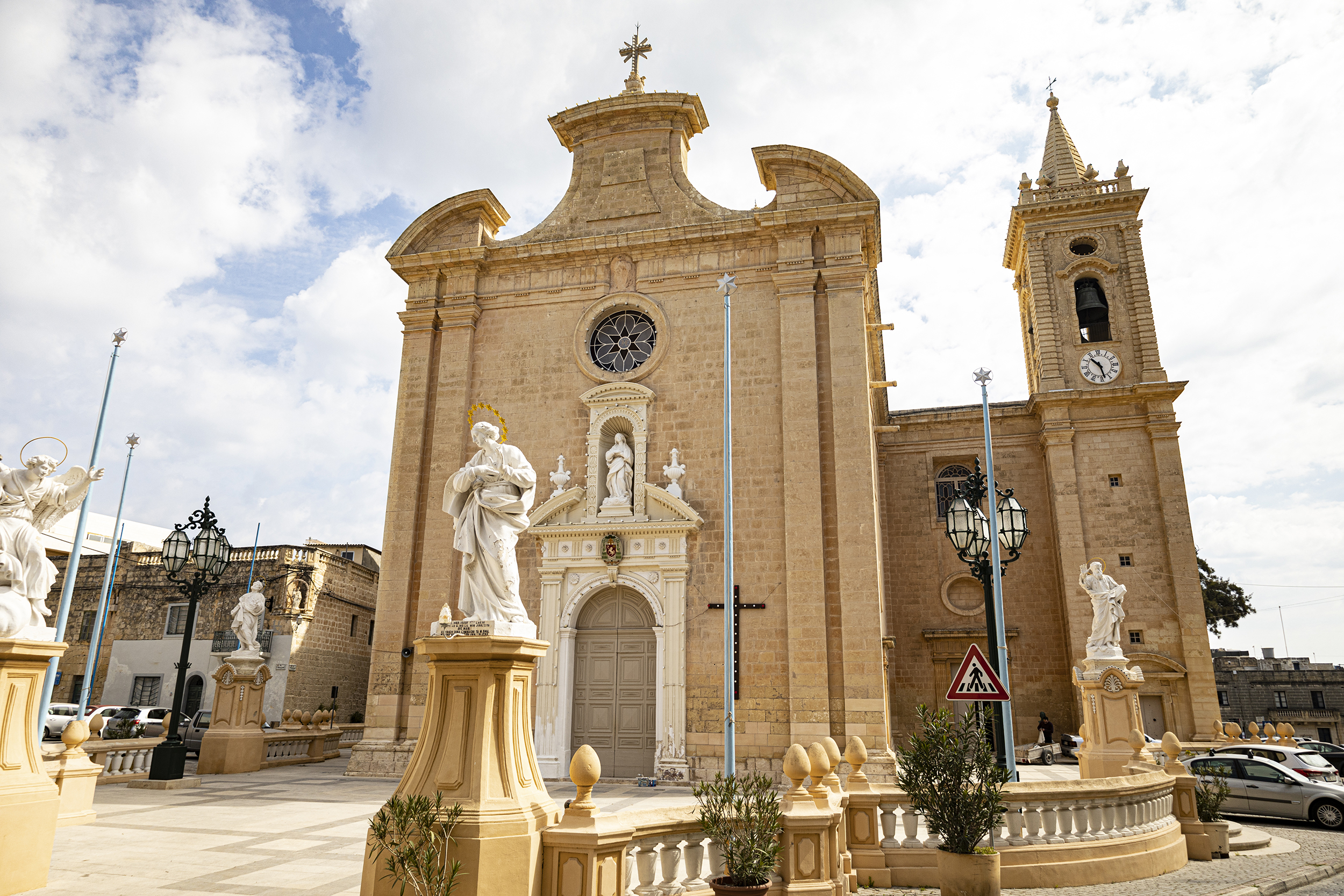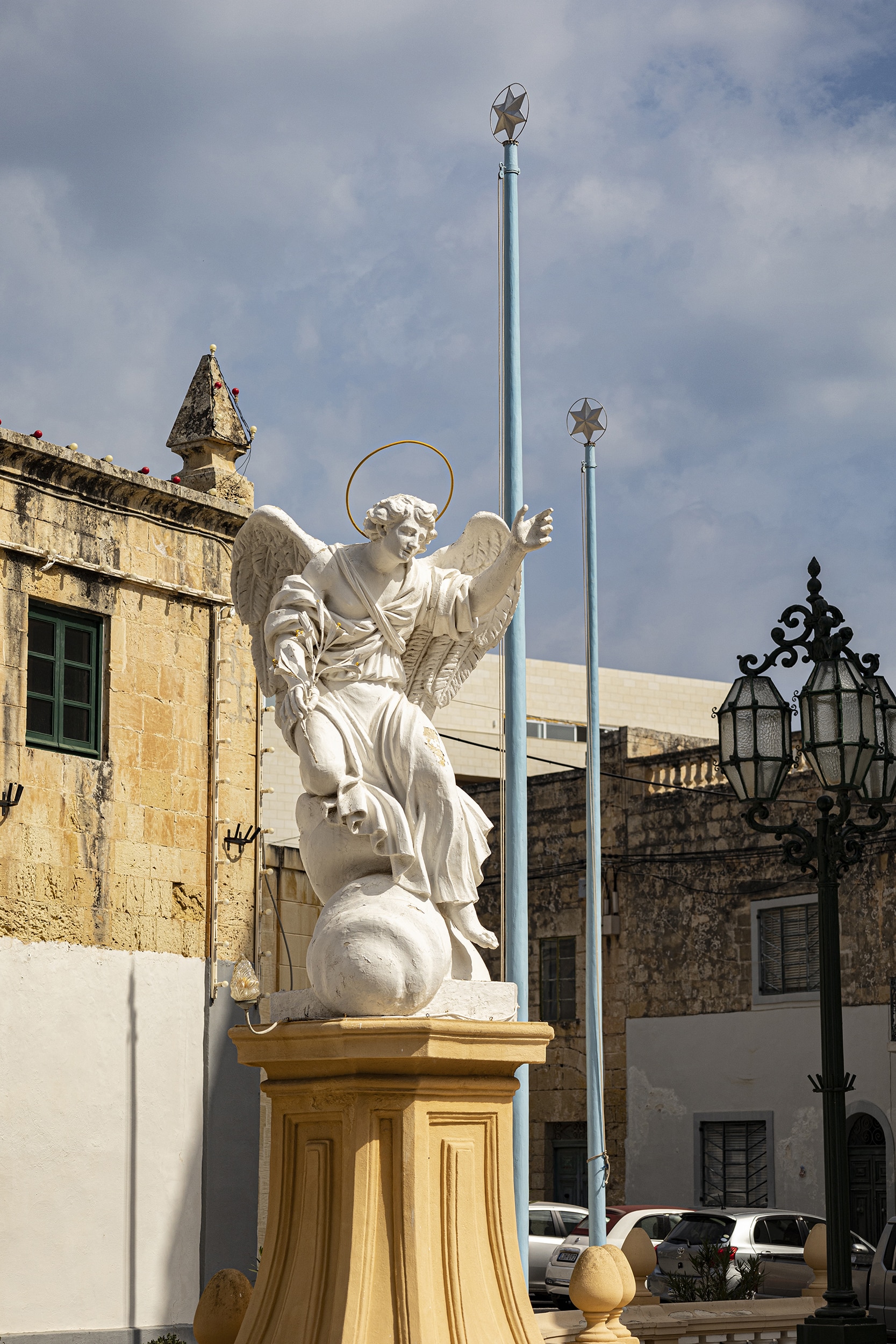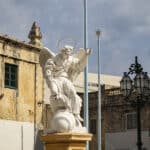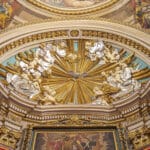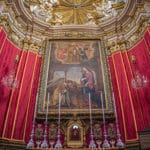Parish Church of the Annunciation
The Parish Church of the Annunciation of the Virgin Mary was raised on a different site from that of the old Parish church. The site chosen for the new church occupied the site of previous houses and was situated between two main areas of what today constitutes this village of Hal-Balzan. In 1669 the first stone of the new church was laid and blessed by Parish priest Reverend Domenico Ellul. The building of the church was completed in 1695. The architect of the Baroque church is unknown though it is attributed to the Italian architect Francesco Buonamici (1596-1677). In 1686, the Maltese architects Lorenzo Gafà and Giovanni Barbara were appointed to proceed with the construction of the choir and transepts.
Historic Detail
The church has a rich and unusual facade, in a formal, symmetrical design, with a Tuscan Doric architectural ornamentation. Its central axis comprises the main door, a niche housing a statue of Our Lady as well as a round window above the latter.
The dome was built between 1699 and 1707, in an uncommon style including elements that resemble the architecture of Tommaso Dingli and Lorenzo Gafà. Its drum is of an octagonal and elongated form with high windows. The eight-sided drum is adorned with Ionic pilasters. It is crowned by a dome and a lantern on which is a cross.
The church belltower was built in 1708. The belfry has four windows, with a small oval window above them. In 1708, the first bell was brought from Messina in Sicily. Two other bells were added in 1719. Four more bells were bought from Giulio Cauchi, with the first and largest made in 1890 by Giulio Cauchi while the other three were later made by Gulio’s son. In 1925, five of the older bells were then replaced by new ones from Paccard Ltd. in Annecy, France. The 6th and largest bell, known as ‘il-qanpiena l-kbira’ was added in 1948.
Also, on the belltower was an old clock, built by the Maltese clockmaker Pietro Tanti. It was placed on the belltower in 1744. The belfry underwent structural changes at the same time. In 1970, the old clock was replaced with a new electric clock by Petit & Fritsen Ltd, of the Netherlands.
The balustraded parvis is embellished by four large stone sculptures of full-length figures. The Archangel Gabriel and Our Lady were carved in 1802, by the Maltese sculptor Sigismondo Dimech. The statues of St Peter and St Paul were carved by an unknown artist between 1716 and 1717. The latter two statues were previously displayed inside the church.
Highlight:
Internally, the dome is embellished with an exuberance of fine sculptures in the Ionic style featuring putti, angels, cornices, and other architectural elements that render it a very pleasing and novel creation. The pilasters lifting the dome are carved in caryatids, of draped male and female semi-figures with Ionic capitals on their heads.
The vault of the transept dedicated to the Rosary is adorned by paintings by the Maltese artist Emvin Cremona and the Gozitan artist Paul Camilleri Cauchi. The vault portrays the role of the Virgin Mary in the salvation of mankind. It is divided into sections that show the Annunciation, the Death of Christ on the Cross, and Mary being welcomed by the Eternal Father.
The pendentives of the Rosary Chapel feature female personages from the Old Testament - Rebecca, Ruth, Sarah and Rachel - executed by Paul Camilleri Cauchi, who also executed the chapels sculptural ornamentation and paintings of The Prophets.
Titular Painting:
The titular painting of The Annunciation of the Virgin Mary was executed in 1857, by the Maltese artist Giuseppe Calleja (1828-1915). The oil-on-canvas painting is surrounded by a carved frame, painted in blue and gold, the colours of the Virgin Mary. The gilt and painted sculpture of the Holy Spirit in the apse was carved by Mastro Antonio and his son Paola soon after 1709.
The painting depicts the Archangel Gabriel kneeling at the feet of Mary, as he announces the news that she will bear the Son of God; the upper half of the painting shows God the Father surrounded by angels. The painting's iconography is based on the Protoevangelium of James: The angel Gabriel was sent to her from God, to declare to her the conception of Our Saviour and the manner and way of her conceiving him. Accordingly going into her he fled the chamber where she was with a prodigious light, and in a most courteous manner saluting her (Ch. 7: 1-2)
The Annunciation takes place in a Renaissance setting, with a large window opening onto a mountain landscape. On the windowsill is a lily, a flower which symbolises the purity of the Virgin Mary.
Project Information:
The European Union co-funded project, focussed on conservation actions to ensure the long-term preservation of this historic church, and its bell tower. The interventions sought to mitigate the actions from rising damp and weathering processes which acerbated deterioration of the South Transept walls, putting at risk the structural integrity of the Bell Tower. These actions are ensuring the long-term protection and enjoyment of this historic building lying in the heart of the community.
Visitors Opening Hours:
Refer to parrocci.knisja.mt/parrocca for full details.
How to arrive:
Refer to Malta Public Transport website: www.publictransport.mt
